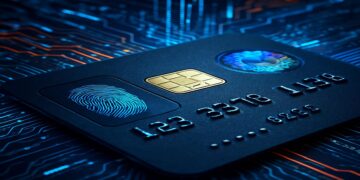How to Identify and Avoid Financial Fraud When Shopping Online

The Importance of Fraud Awareness
In today’s digital age, online shopping offers unparalleled convenience. However, it also opens the door to potential risks, particularly financial fraud. As consumers, understanding how to navigate these dangers is essential for a secure online experience.
With a staggering increase in online transactions—estimated at $1 trillion in e-commerce sales during 2021 in the U.S. alone—fraudsters have developed sophisticated methods to exploit unsuspecting shoppers. According to the Federal Trade Commission (FTC), reports of credit card fraud and identity theft have surged significantly. Therefore, it is crucial to recognize the common types of fraud that can occur:
- Phishing Scams: These are fraudulent emails that masquerade as trustworthy sources, tricking you into providing personal information such as passwords or Social Security numbers. For instance, a phishing email could appear to be from a popular retailer, urging users to “verify” their account details due to a supposed security breach.
- Fake Websites: Some scammers construct lifelike imitations of real retailers designed to steal payment information. For example, a URL resembling “www.amazon-secure.com” could direct unsuspecting users to a fake checkout page. Always scrutinize web addresses to avoid falling victim to these deceptive sites.
- Unsecure Payment Methods: Using outdated payment systems or connecting via public Wi-Fi can undermine your financial security. Cybercriminals can intercept information transmitted over vulnerable networks, potentially accessing your sensitive details.
Strategies for Protection
Protecting yourself requires a proactive approach. Consider adopting the following essential strategies:
- Always Verify URLs: Before making any purchases, check for secure connections by looking for “https” at the beginning of a URL and verifying the authenticity of the domain name. The presence of a padlock icon also indicates a more secure site.
- Use Credit Cards: Credit cards generally offer better fraud protection compared to debit cards, as they often have built-in measures such as chargeback options and enhanced security features. Some cards even provide additional safeguards like two-factor authentication.
- Enable Alerts: Sign up for transaction alerts through your bank or financial institution. This allows you to receive instant notifications about any activity in your accounts, making it easier to catch unauthorized transactions early.
Conclusion
The truth is, awareness is your best defense against financial fraud. By educating yourself and staying informed about the dangers and the methods that scammers employ, you can enjoy the benefits of online shopping while keeping your finances secure. Empowered with knowledge, you can approach the digital marketplace with confidence, making informed decisions that prioritize your safety.
In conclusion, while online shopping presents remarkable advantages such as convenience and a wide array of product choices, it is imperative to implement protective measures against fraud. The digital world changes swiftly; staying vigilant and proactive can safeguard your financial wellness and allow you to embrace all the benefits that e-commerce has to offer.
SEE ALSO: Click here to read another article
Recognizing Red Flags of Online Fraud
As the online marketplace continues to grow, so do the tactics used by fraudsters to deceive consumers. Understanding how to identify the warning signs of financial fraud can significantly reduce your risk of falling victim to these scams. Here are some notable red flags to watch out for while shopping online:
- Unbelievable Deals: If an offer seems too good to be true, it probably is. Be wary of websites that promise extreme discounts or prices significantly lower than the average market rate. Scammers often lure unsuspecting victims with attractive deals that require immediate action, such as limited-time offers, to create a sense of urgency.
- Too Much Personal Information Requested: Legitimate retailers typically only require essential information when processing a purchase. If a website requests excessive personal details, such as your Social Security number or bank account information outside of payment processing, this is a major warning sign. Always question the necessity of the information being demanded.
- Poor Website Design: A professional online store usually boasts a well-designed user interface. If you encounter sites that look outdated, have broken links, or feature miscellaneous text and graphics, this might indicate a fraudulent operation. Such sites may also contain numerous typographical errors or low-quality images, suggesting a lack of professionalism.
- Limited Payment Options: Reputable e-commerce sites offer various payment methods, including credit cards, PayPal, and other payment processors. A site that limits you to a particular payment method may be attempting to exploit sensitive data. Always ensure you have a variety of secure payment options before making a purchase.
- No Clear Contact Information: Trustworthy retailers provide clear contact information including a physical address, phone numbers, and customer service options. If you cannot find this information or the contact information seems suspicious, it’s a strong indicator that you should avoid making any transactions.
Another essential factor to consider is the use of customer reviews. Genuine feedback from other shoppers can give you insight into the retailer’s reputation. However, be cautious of sites that host only positive reviews or don’t provide a feedback system at all. Fraudulent websites may fabricate reviews to create a misleading impression of reliability. Look for third-party review sites to validate the credibility of an online retailer.
Finally, always perform research on unfamiliar websites. A quick search can reveal if others have reported fraudulent activities associated with a site. Websites like the Better Business Bureau (BBB) or Trustpilot can be invaluable resources in this regard, providing insights into a retailer’s history and customer experiences. By being diligent and aware, you can drastically reduce your risk of encountering financial fraud while enjoying the convenience of online shopping.
CHECK OUT: Click here to explore more
Protecting Yourself Against Online Fraud
In addition to recognizing red flags, taking proactive measures to protect yourself when shopping online is crucial in avoiding financial fraud. Here are several strategies to enhance your online shopping safety:
- Use Credit Cards Over Debit Cards: When shopping online, it’s advisable to use a credit card instead of a debit card. This is because credit cards often come with better fraud protection and dispute resolution options. In the event of unauthorized transactions, consumers may be able to contest charges more easily with their credit card provider, ensuring that they are not left liable for fraudulent activity.
- Monitor Your Accounts Regularly: Frequently checking your bank and credit card statements is essential. Look out for any unfamiliar purchases or discrepancies. Quickly reporting unauthorized transactions to your bank can minimize the damage and may increase the chances of recovering lost funds. Setting up alerts for your transactions can also help in promptly identifying suspicious activity.
- Secure Your Internet Connection: When shopping online, make sure you are connected to a secure and private internet network. Avoid using public Wi-Fi for shopping, as unsecured connections can expose your personal data to potential hackers. If you must use a public network, consider using a Virtual Private Network (VPN) to secure your connection and protect sensitive information.
- Keep Software Updated: Ensure that your devices (smartphones, tablets, and computers) are equipped with the latest security software, including firewalls and virus protection. Regular updates not only improve functionality but also assist in protecting against the latest security vulnerabilities that fraudsters may exploit.
- Be Wary of Phishing Scams: Phishing attacks are a common method for fraudsters to gain access to your financial information. E-mails, text messages, or social media messages that contain suspicious links or ask for personal information should be treated with caution. Always verify the source before clicking on links, and when in doubt, visit the retailer’s website directly.
Another promising approach to bolster your defense against financial fraud is leveraging two-factor authentication. Many retailers and financial institutions now offer this additional layer of security, which requires you to provide a second form of identification, such as a code sent to your mobile device, in addition to your password. This makes it considerably harder for fraudsters to gain access to your accounts.
Trust Your Instincts
It is vital to trust your instincts when online shopping. If something doesn’t feel right about a website or a deal, take a step back and reevaluate. Research alternatives and ensure you’re buying from reputable retailers. Your intuition can be a powerful ally in protecting against fraud—if an offer feels overly risky or pressured, it may be best to walk away.
Staying informed and educated about the latest fraud tactics can also aid your defense. Websites like the Federal Trade Commission (FTC) and the Consumer Financial Protection Bureau (CFPB) provide valuable resources on recognizing and avoiding financial scams. Regularly updating yourself on their guidance allows for better preparation against potential threats.
With the knowledge of both recognizing red flags and employing effective protective strategies, online shopping can be a safer experience. By remaining vigilant and proactive, you can enjoy the convenience of online shopping while minimizing your risk of financial fraud.
SEE ALSO: Click here to read another article
Conclusion
In today’s digital shopping culture, understanding how to identify and avoid financial fraud is not just advisable—it’s essential. The convenience of online retail can come with hidden threats, but being informed and taking appropriate steps drastically reduces your vulnerability. By employing careful practices such as choosing credit cards over debit cards and actively monitoring your accounts, you can safeguard your financial interests and spot discrepancies in real-time.
Moreover, establishing a secure browsing environment and staying updated on the latest cybersecurity measures are vital in fortifying your defenses. For instance, two-factor authentication dramatically enhances security by making it more difficult for unauthorized users to access your accounts, thereby giving you greater peace of mind while shopping. Trusting your instincts and remaining cautious can also deter you from falling prey to fraudulent schemes.
As online scams evolve, so should your strategies for protection. Take advantage of resources from organizations like the Federal Trade Commission to stay abreast of emerging threats. Keeping informed not only empowers you but also helps create a safer online shopping experience for everyone. Ultimately, by combining vigilance with knowledge, you can continue to enjoy the benefits of online shopping without the worry of financial fraud intruding on your enjoyment.

Linda Carter is a writer and financial expert specializing in personal finance and financial planning. With extensive experience helping individuals achieve financial stability and make informed decisions, Linda shares her knowledge on the Father Company platform. Her goal is to empower readers with practical advice and strategies for financial success.





